When I was in middle school, many decades ago, our Spanish teacher took us on field trips to Olvera Street in Downtown Los Angeles to celebrate Cinco de Mayo. We would blast egg-shaped poppers that exploded everywhere.
Find things to do and where to stay near Olvera Street, here
Olvera Street is across the street from Union Station. It is a tiny street with Mexican-style vendor booths, shops, and restaurants next to Plaza Olvera which has a large kiosk used for speeches and performances. Churches and other historic buildings surround it.
A reminder of California’s Mexican heritage
El Pueblo de Los Angeles Historic Monument is the birthplace of the city of Los Angeles.
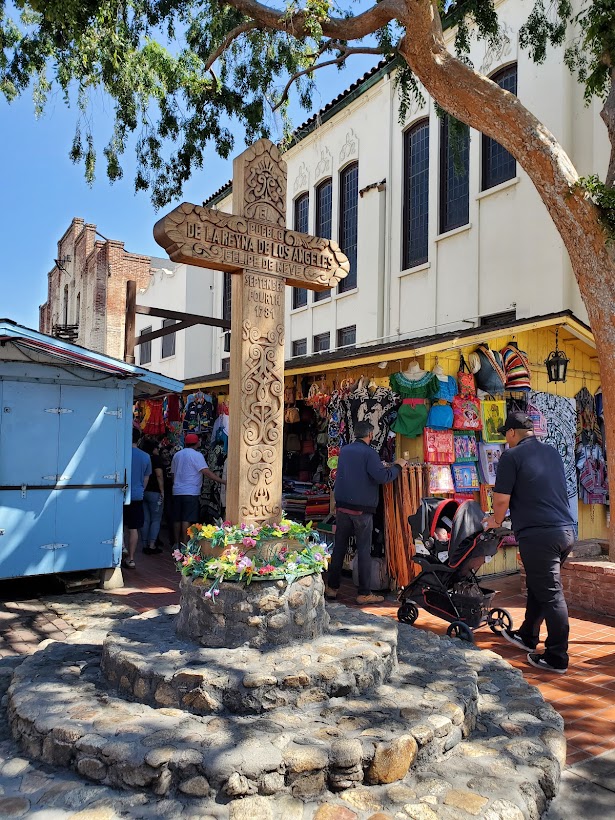
It was formerly the site of California’s first vineyards outside of the missions which I wrote about in a post called The History of Booze, Bars, and Prohibition in Los Angeles. The street was originally called Vine Street and Wine Street but was renamed Olvera Street in 1877 to honor Augustin Olvera (1818-1876) who held the first county court trials at his home.
The buildings had disintegrated into squalor by the end of the 19th century. Prostitutes, gambling, opium dens, and crime were rampant. Working-class immigrants who had settled there during the Gold Rush would also gather to discuss so-called “radical” politics at the time. It became known as Sonora Town.
Transforming Olvera Street for tourists
Christine Sterling was a wealthy young socialite who revitalized Olvera Street in 1928. She was disturbed by how dilapidated and shady it had become but could see its historical value. Her idea was to save its iconic historical buildings to preserve its Mexican heritage and attract tourists.
She envisioned a “Little Mexico” marketplace where merchants could sell hand-crafted wares. It was realized in 1930 when the new Olvera Street opened on Easter Sunday.
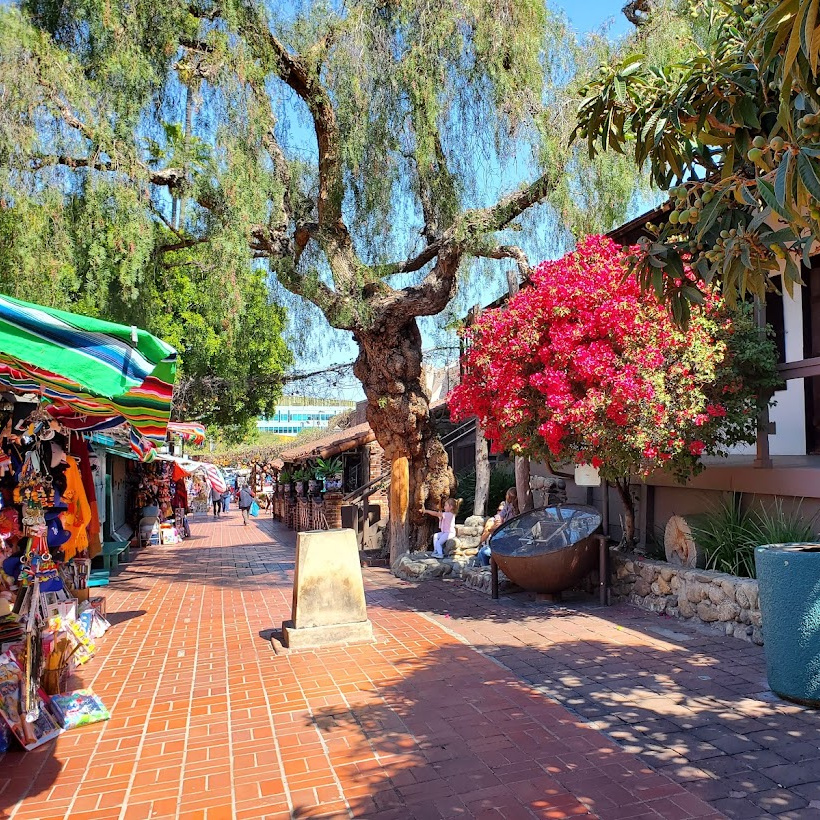
Sterling was also instrumental in creating the new Chinatown which opened as “China City” in 1938. There was controversy because both areas were designed by an Anglo woman with a stereotypical sense of culture. Both Chinese and Mexican immigrants made both sections of the city their own soon afterward.
Los Angeles history preserved
27 historic buildings encompass Olvera Plaza. The oldest is the Avila Adobe (1818), which is the oldest home still standing in Los Angeles. It was originally the residence of Francisco Jose Avila who was mayor of Los Angeles from 1810 – 1811.
Pico House was built in 1869 by Pio Pico, who was the last Mexican governor of Alta California from 1845 – 1846. He constructed it to be a luxury hotel. It was designed by the same architect who built Saint Vibiana Cathedral, now a restaurant and event center. I took a haunted virtual tour of DTLA, and Pico House was the first to be mentioned because ghosts are known to haunt it.
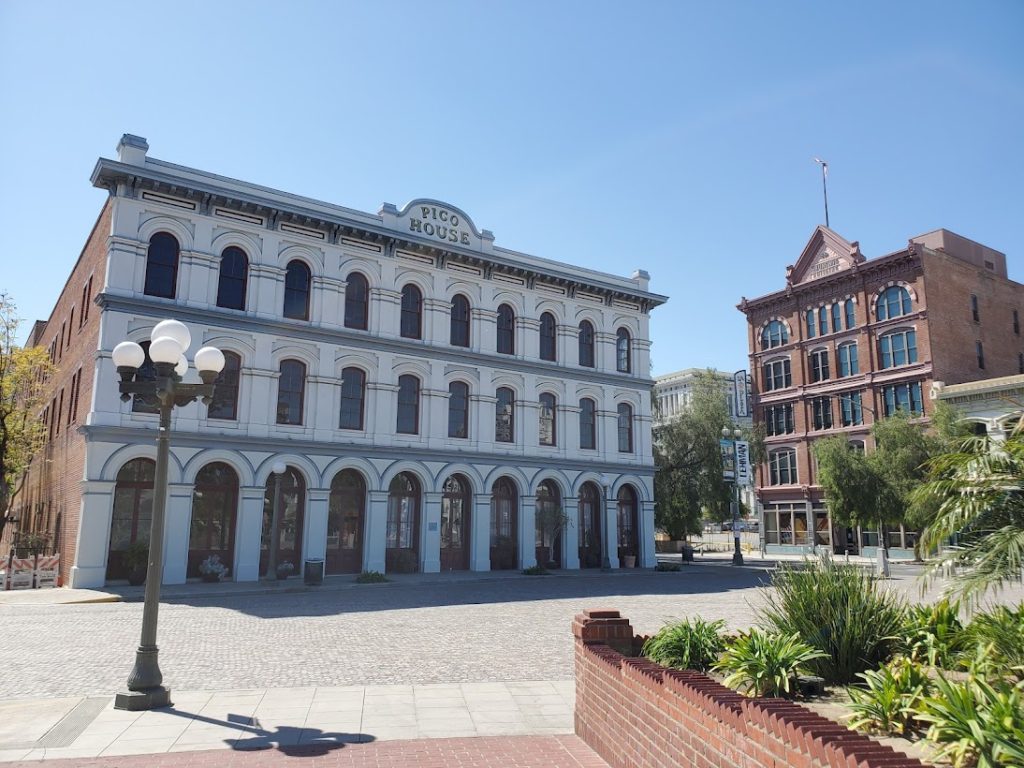
Another historical building at Olvera Street is the Plaza firehouse (1884), which was the city’s first fire station. It is now a museum. Over its history, it was also used as a saloon, cigar store, cheap rooms, and possibly even a brothel.
La Placita Church (Plaza Church) was founded by the Spanish in 1814 with a new structure dedicated in 1822. It was rebuilt in 1861 and is still an active parish known as Our Lady Queen of Angels.
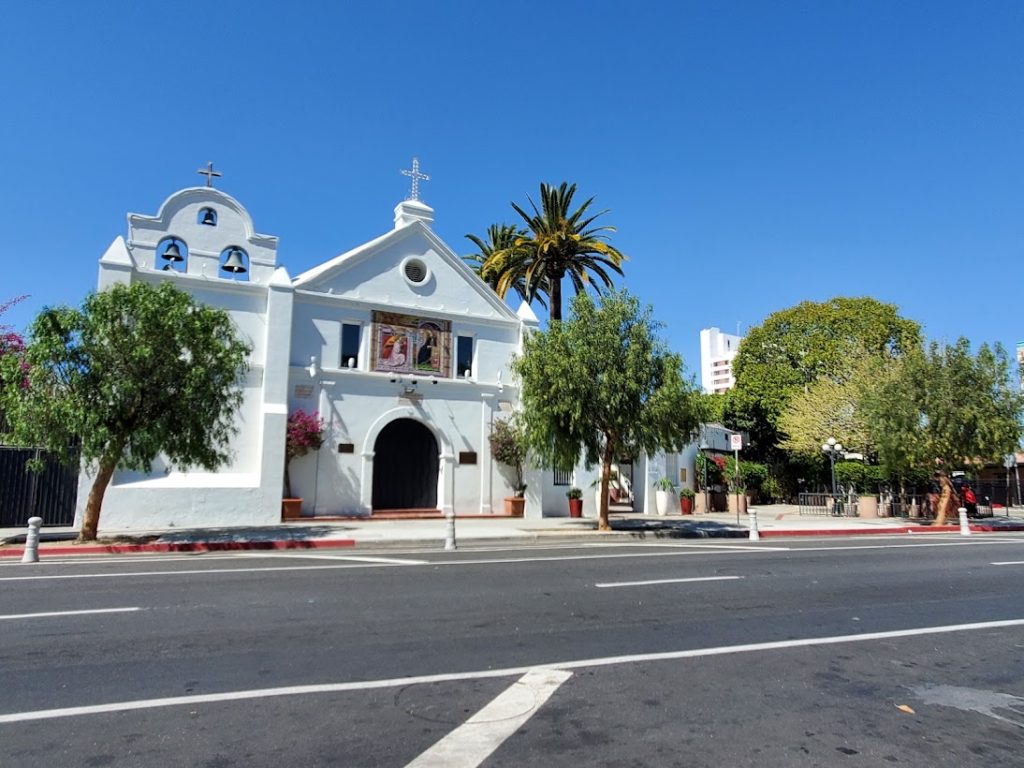
Small museums at the plaza include Sepulveda House which is a 22-room Victorian (1887), The Chinese American Museum located in the historic Garnier building(1890), and the Italian American Museum in historic Italian Hall (1908).
Enjoy Mexican and other ethnic cuisines nearby
You can enjoy authentic Mexican cuisine at several restaurants located on Olvera Street. I stopped for lunch at Las Anitas inside the Italian Hall for fish tacos with some friends.
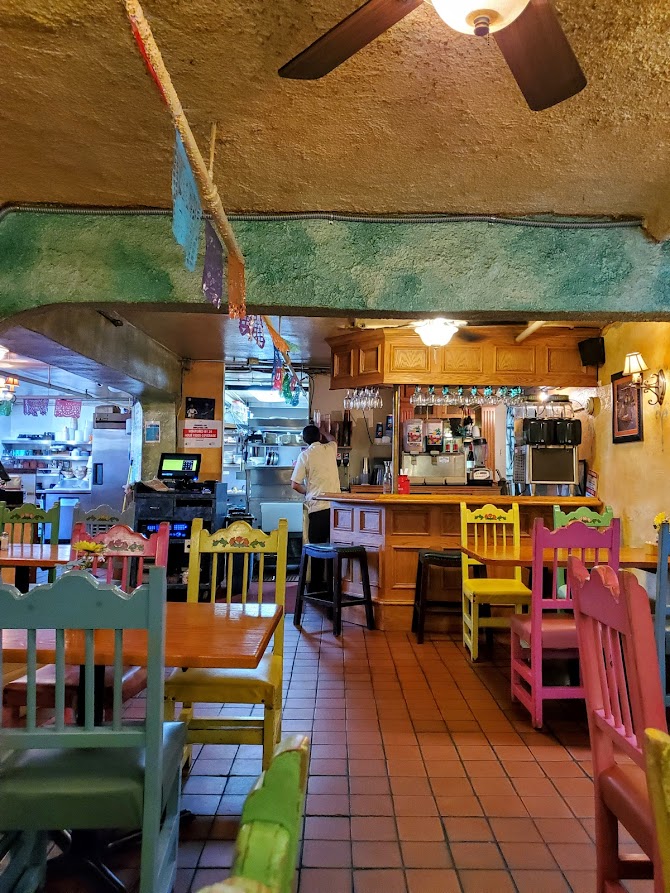
Casa La Golandrina Mexican Café was the oldest restaurant on Olvera Street that opened in 1924 inside Pelanconi House built by winemaker Giuseppe Cavacci in 1855. El Paseo Inn has been at Olvera Street since it opened in 1930. It was housed in a building that was part of the Pelanconi Winery from 1870 – 1914. The restaurant closed in 2023.
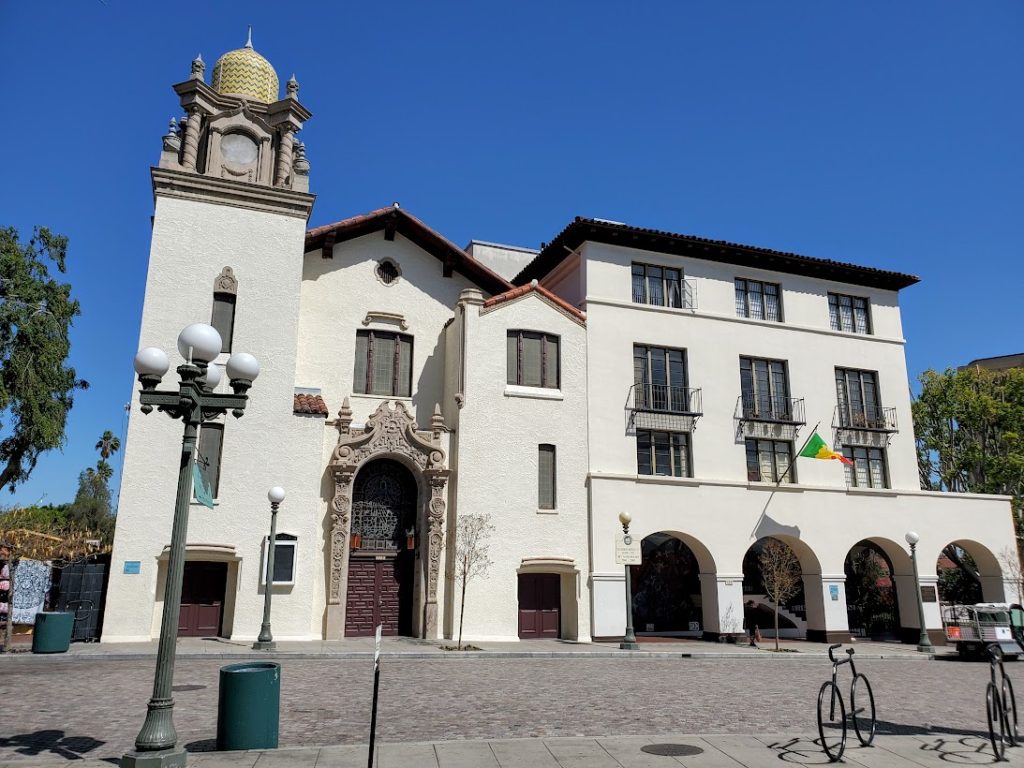
Cielito Lindo is an outdoor stand with a small restaurant inside that opened in 1934.
La Luz del Dia is another popular restaurant on Olvera Street that has been in operation since 1959. It was a grocery store in 1915 at another location and has relocated several times. The store supplied groceries to Christine Sterling who was staying at the Avila Adobe at the time. She encouraged the owner to open a restaurant on Olvera Street.
Philippe the Original is famous for its French-dipped sandwiches. It is located on Alameda St. two blocks from Olvera Street on the edge of Chinatown. This long-time LA establishment with sawdust on the floors has been popular in downtown Los Angeles since 1908.
Not far away is the Eastside Italian Deli (1929) on Alpine Street for some of the best Italian food in the city.
A festive atmosphere every day
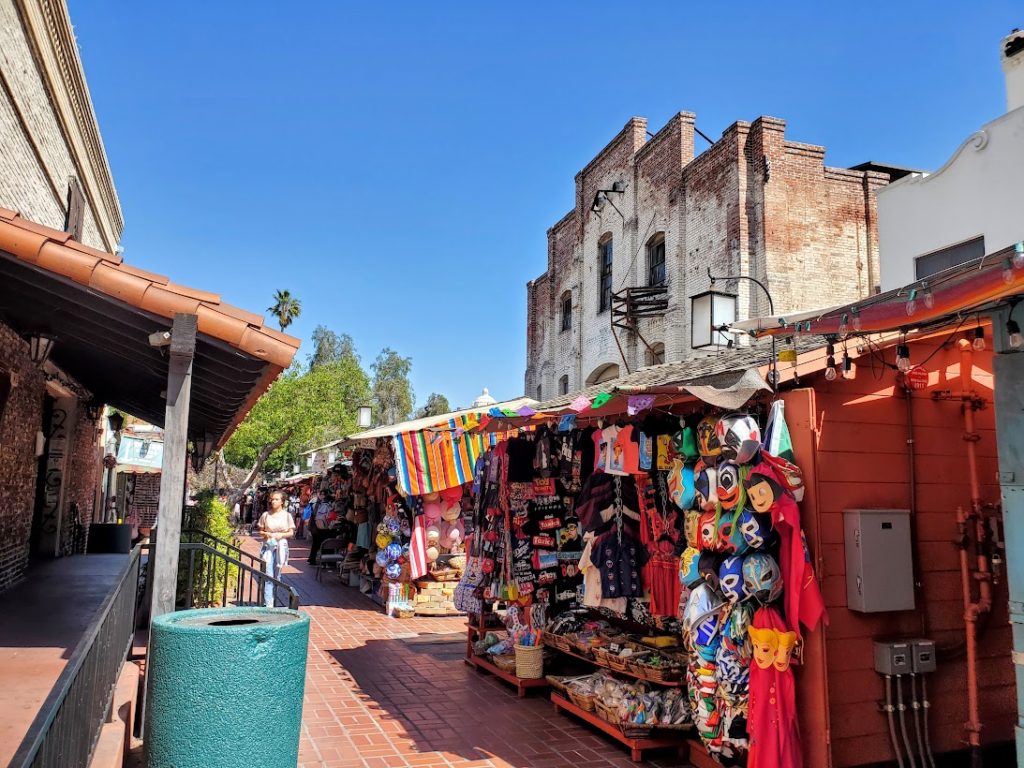
You can take a free tour of Olvera Street at Las Angelitas del Pueblo where walk-ins are welcome. They are given Thursday, Friday, and Saturday at 10 am, 11 am, and 12 noon.
Events at the plaza include Dia De Los Muertos, Cinco de Mayo, and Las Posadas during Christmas. For updates on upcoming events, get more information here.
It’s easy to take the L.A. Metro to Union Station from various parts of Los Angeles and the San Fernando Valley. Once you arrive, it’s a quick walk across the street to Olvera Street. Chinatown, the Music Center, and the Disney Concert Hall are within walking distance if you are up to taking a stroll. Parking lots are available next to the Plaza.
http://www.jdoqocy.com/click-6386587-10775740?URL=http%3A%2F%2Fwww.tripadvisor.com%2FAttractions-g32655-Activities-zfn7231034-Los_Angeles_California.html%3Fcja%3D10775740%26cjp%3D6386587%26m%3D13092
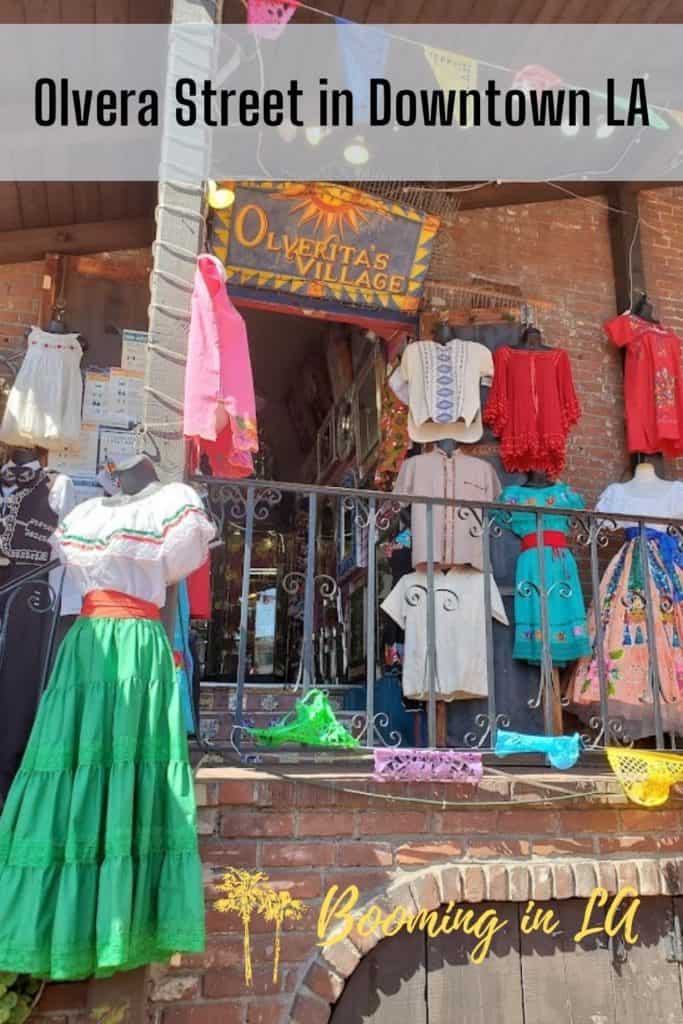

Leave a Reply